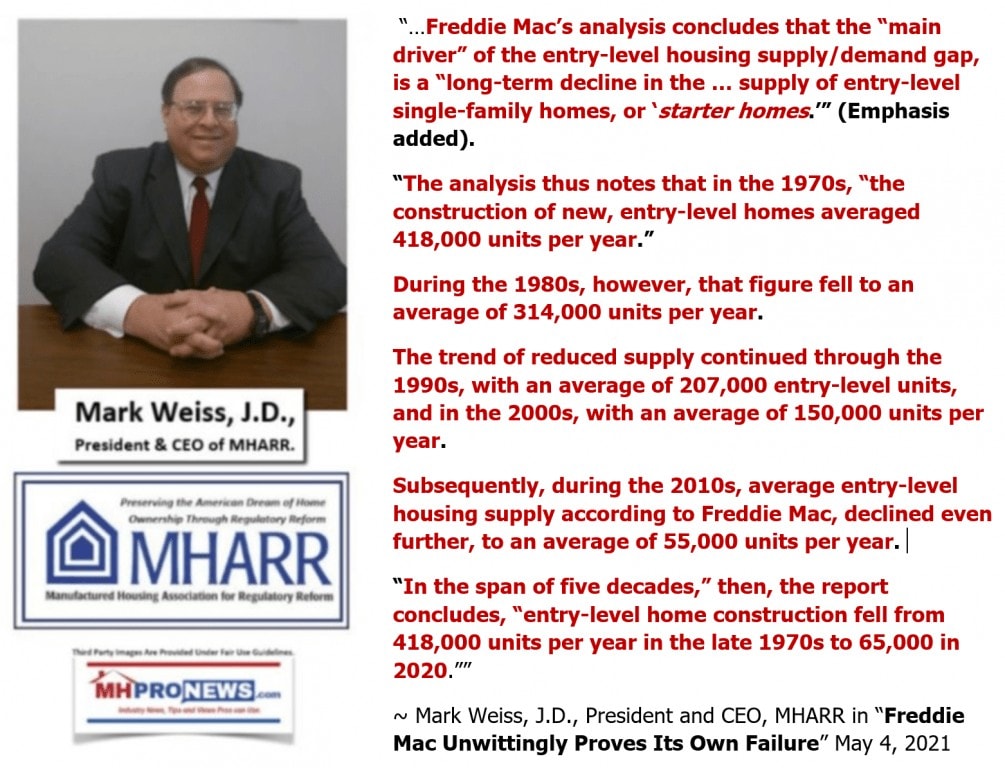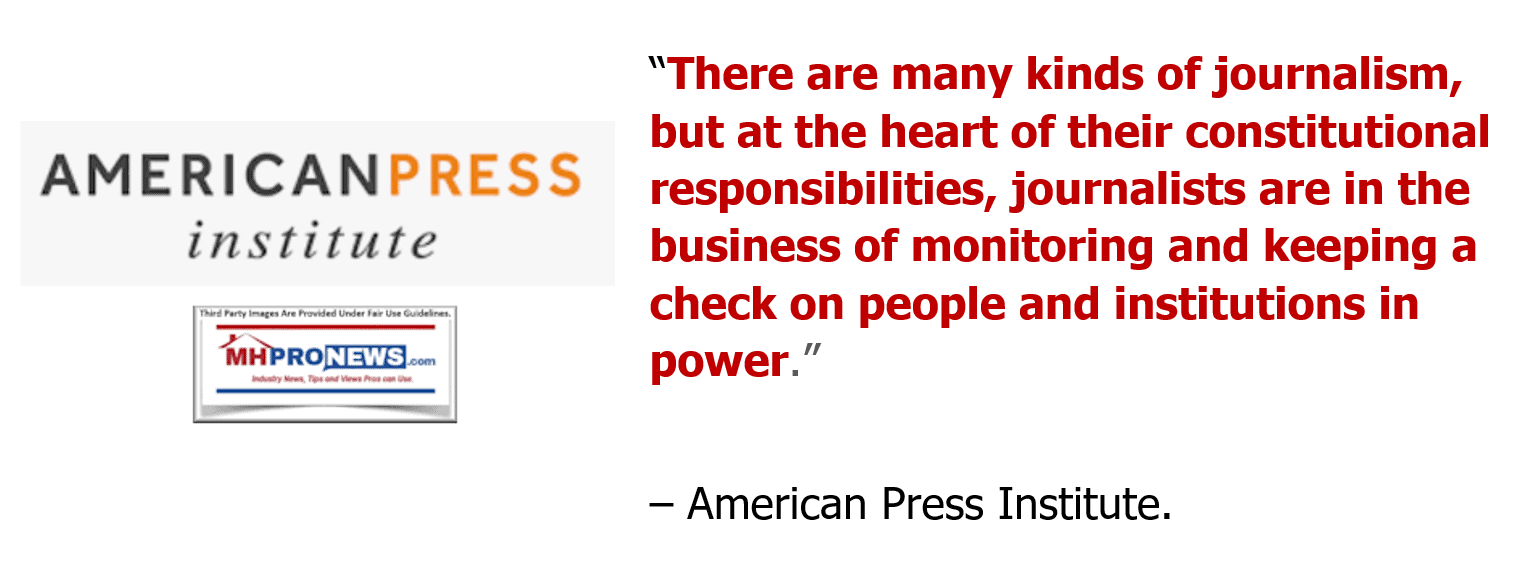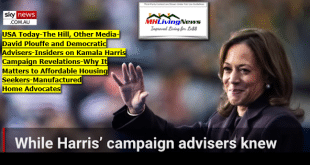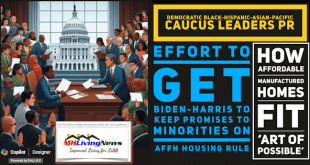In mortgage giant Freddie Mac published “Identifying the Opportunities to Expand Manufactured Housing” by Astou Aw, Lariece Brown, and Ashley Yea, the trio make numerous fascinating statements they say are the fruits of their 2022 research. “Manufactured homes cost on average about half as much as site-built homes (excluding the land) and offer an attractive, energy efficient, resilient housing option. Yet they compose only around 7.5% of existing and 9% of new U.S. homes. A major reason for the low percentage: state and local zoning regulations – often based on misconceptions – that constrain manufactured housing’s role in the housing market. The potential for manufactured housing to play a bigger role in filling the affordable housing gap has taken center stage over the last few years.” They also make the point from the outset that affordable home ownership and the ability to build wealth go hand-in-hand. They wrote: “affordable housing and equitable opportunities to build wealth through sustainable homeownership” which they connect directly to the positive opportunities found in manufactured housing.
The entire research document is found linked below. But MHLivingNews will first share some of the researchers work on behalf of Freddie Mac.
Part I. Exploring “Identifying the Opportunities to Expand Manufactured Housing” by Astou Aw, Lariece Brown, and Ashley Yea
Their document says it was published to: “To address industry requests for information that could help in identifying significant opportunities for market growth and transformation, Freddie Mac performed a quantitative analysis of data drawn from a variety of the best-available sources to provide a holistic view of the market.” Be that as it may, a fact check of the Manufactured Housing Institute (MHI) website on 1.28.2023 reveals that this document is not available there. More on that further below in Part II of this report and analysis. The key findings of Aw, Brown and Yea were stated by the researchers as follows.
- More stringent zoning is associated with a lower share of manufactured home (MH) loans as a percentage of total loans.
- The stricter the regulation is around residential land use in a state, the fewer MH units shipped to that state.
- The areas with the most shipments of manufactured homes are in the West, while areas of opportunity are most prevalent in the Midwest.
- Jurisdictions considered “MH friendly” based on a framework that we developed include many individuals who appear able to qualify for mortgages and could benefit from more affordable homeownership options. Close to 25 million people living in MH-friendly jurisdictions are “mortgage ready” today. If zoning were less stringent, more than a million more individuals in those jurisdictions might be able to achieve homeownership with manufactured housing.
- When compared to recent buyers of site-built homes, MH-friendly jurisdictions contain a larger share of Black and Hispanic potential homebuyers.

Note that MHLivingNews believes the researchers – or someone in the publication chain – seemingly erred in the bullet above in saying that “areas with the most shipments of manufactured homes are in the West.” A look at the Manufactured Housing Association for Regulatory Reform (MHARR) website’s most recent manufactured home shipment data reveals that only California (#8) in the West makes the top 10 states for new manufactured housing shipments. Meanwhile, eight (8) of the top ten (10) states for manufactured home shipments are all in the U.S. Census Bureau region designated as the South, which includes Texas (#1), Florida (#2), Louisiana (#3) in and five (5) others that can be seen on the MHARR website. Fannie Mae’s Single Family media contact was contacted about that concern but has not yet responded to that inquiry. In fairness, it should be noted that the inquiry occurred on a Saturday, and not everyone works during a weekend.
That said, while there are other items that could be called misses (see further below), the bulk of that summary by Aw, Brown and Yea seem to be demonstrably accurate. For instance. The Urban Institute (UI) published a similar report – see that linked below – which cited the Freddie Mac research by Aw, Brown, and Yea. More on that is linked below. Note that the trio covered ground that the Urban Institute did not beyond mentioning their research.
Millions of “Mortgage Ready” Renters Could Own a Manufactured Home
That research by Freddie Mac said on page 8 that: “In total, close to 25 million “mortgage-ready” consumers live in MH friendly metro areas.” MH friendly areas were defined as follows.

- Lot-size requirements – looser density requirements imply lesser restrictions on the supply of new housing; lower lot size requirements imply more affordable or cheaper cost of land
- The Wharton Residential Land Use Regulatory Index (WRLURI)
- Restrictions on the placement of manufactured housing through zoning laws
- The number of constraints imposed on new housing supply
- The degree to which the jurisdiction encourages inclusion of manufactured housing through the designation of manufactured homes as real property, zoning, and consistent treatment with other housing types
Our MH Friendly Index has three tiers. Tier 1 includes jurisdictions that are most welcoming to manufactured housing. We define Tier 2 jurisdictions by relaxing some of the criteria we used to define Tier 1 to include jurisdictions that may apply more stringent restrictions; we further relaxed our criteria to define Tier 3. The tiers are not mutually exclusive: All jurisdictions in Tier 1 are included in Tier 2 and all jurisdictions in Tier 2 are included in Tier 3.”
On page 11, Freddie Mac’s researchers stated that: “the Midwest contains the greatest share of jurisdictions that we identified as MH friendly, but that region receives the second lowest number of MH shipments.” It continues with these important statements.

Besides zoning however, perceptions significantly affect decisions around manufactured housing. Many consumers imagine manufactured homes as unattractive, unsafe, a bad investment and lenders are concerned about loan performance. In reality, manufactured homes are built to strict standards of quality established nationally by the U.S. Department of Housing and Urban Development, attractive, resilient, energy-efficient, and appreciate in value at about the same rate as site-built homes (Goodman et al., 2018). …”
Part II: Additional Information with More MHLivingNews Analysis and Commentary in Brief
So, based on their findings, between 25 to 26 million Americans who rent are deemed to be living “in MH-friendly” jurisdictions and are “mortgage ready” today.” To put that in context, there are currently about 9 million such homes (about 2 pre-HUD Code of those are mobile homes built on a permanent chassis, vs. 80 percent of those homes were produced on or after June 15, 1976 and were federally certified as being manufactured homes) in the entire U.S. While some of their remarks may bear clarification, that estimated 26 million renters could imply that the number of manufactured homes in the U.S. could in theory be increased by a factor of nearly 3 in those “MH friendly” jurisdictions.
But there is more to this eye-opening report. As regular and detail minded MHLivingNews readers may recognize. Here are some significant topics not mentioned in their research.
A Word search of their research document reveals no mention of the Manufactured Housing Improvement Act of 2000 (MHIA). While “preemption” is mentioned 8 times, per the Word search tool, federal preemption is never mentioned. See the graphics and related linked here. It is not yet known why MHI has failed to bring these issues to their attention?
The reason that is significant, because if federal preemption were being properly deployed, that could be used by HUD to overcome barriers artificially put in place by local jurisdictions that are designed to be manufactured home unfriendly. See the quotes and linked reports in Attachment 1 here.
Closing Observations, Summary and Conclusion
Some of the photos in their research as NOT manufactured homes. That may or may not be a glitch on the part of the researchers, as sometimes publishers provide such illustrations without asking the authors. Whatever the case may be, readers of the Freddie Mac document should not presume that photos are manufactured homes, solely based on the title of their report. Several are obviously not HUD Code manufactured homes.
That noted, MHLivingNews was apparently months or years ahead of these three researchers. Reports like the one below cited HUD research that made a similar point to the ones made by Aw, Brown, and Yea. That said, the trio’s research for Freddie Mac does provide information that others often lack. It is thus a useful, albeit arguably incomplete and at times seemingly misleading, study. As promised above, their full research document, per Freddie Mac, is found at this link here.
It should be noted that for whatever reasons, not only has MHI not yet shared this with their readers/members via the public side of their website, there is evidence that only the Urban Institute and MHLivingNews have mentioned it to date.
Reports like the ones linked below shed light on topics they either mentioned, without supplying relevant insights, or could/should have explored. Given that the Consumer Financial Protection Bureau (CFPB) manufactured housing white paper, the National Association of Realtors (NAR) research by Scholastica “Gay” Cororaton, MHARR, MHI, and numerous mainstream and other publications have named and linked MHLivingNews, our MHProNews sister-site, or this author it is stunning that they failed to take advantage of the wealth of third-party research found on this site, which now includes theirs too.
The bottom lines? Per Freddie Mac, some 25 to 26 million could become manufactured homes in the short term without invoking federal preemption. But tens of millions more could do so if federal preemption were being properly applied.
Let’s wrap up by noting that the term “Duty to Serve” (DTS) is only mentioned once in their report and that is in footnote #7 on page 8. The insights by Mark Weiss, J.D., president and CEO of MHARR arguably applies to this report.
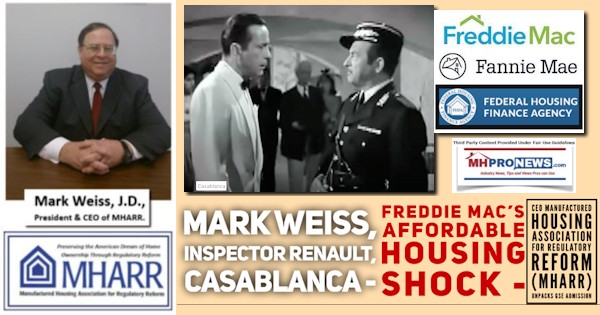
A headline on Bing this morning said that a new survey claims that 76 percent of Americans think it is a bad time to buy a home. While there may be reasons not to be existing and price conventional housing, the time is almost always right to be a new, affordable manufactured home. Many of the problems associated with pre-owned conventional or more costly new site-built housing are avoided. To learn more about any of these topics, surf the site or dive into the specifically linked reports found in this article. ###
Editor’s Note: this timeless video interview is with the late Bill Matchneer, prior administrator of the Office of Manufactured Housing Programs (OMHP) at HUD, and also previously with the CFPB. His insights into manufactured homes are worth the ten minutes, which are laced with several interior and exterior images of modern manufactured homes.


That’s a wrap on this installment of “News through the lens of manufactured homes and factory-built housing” © where “We Provide, You Decide.” © ## (Affordable housing, manufactured homes, reports, fact-checks, analysis, and commentary. Third-party images or content are provided under fair use guidelines for media.) (See Related Reports, further below. Text/image boxes often are hot-linked to other reports that can be access by clicking on them.)

By L.A. “Tony” Kovach – for MHLivingNews.com.
Tony earned a journalism scholarship and earned numerous awards in history and in manufactured housing. For example, he earned the prestigious Lottinville Award in history from the University of Oklahoma, where he studied history and business management. He’s a managing member and co-founder of LifeStyle Factory Homes, LLC, the parent company to MHProNews, and MHLivingNews.com. This article reflects the LLC’s and/or the writer’s position, and may or may not reflect the views of sponsors or supporters.
Connect on LinkedIn: http://www.linkedin.com/in/latonykovach
Recent and Related Reports:
The text/image boxes below are linked to other reports, which can be accessed by clicking on them.
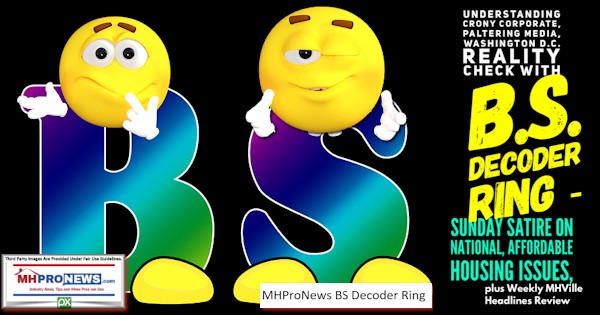
Celebrities, Millionaires, Billionaires and Their Appealing Manufactured Homes
Billionaire$ and Millionaire$ Proudly Hang Out in New York Manufactured Homes, Condo Resort
 manufacturedhomelivingnews.com Manufactured Home Living News
manufacturedhomelivingnews.com Manufactured Home Living News

